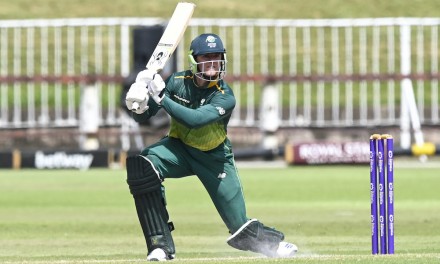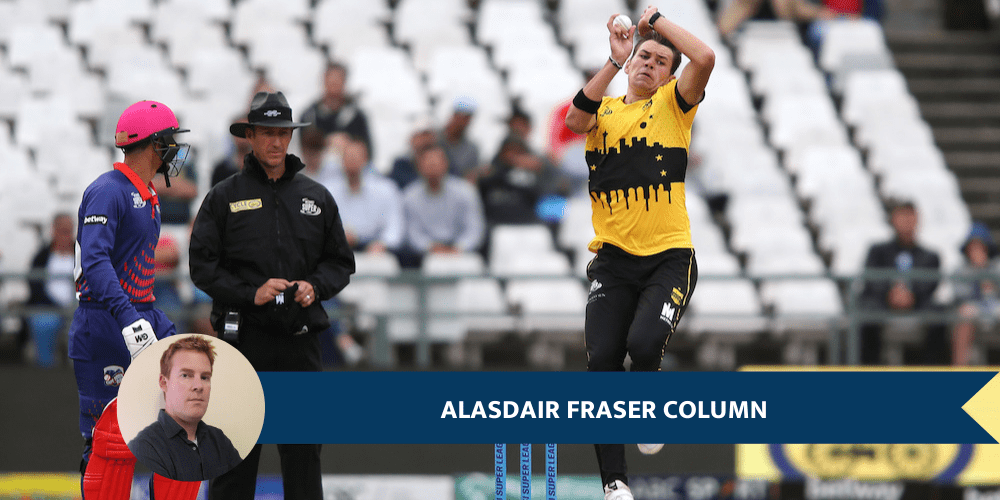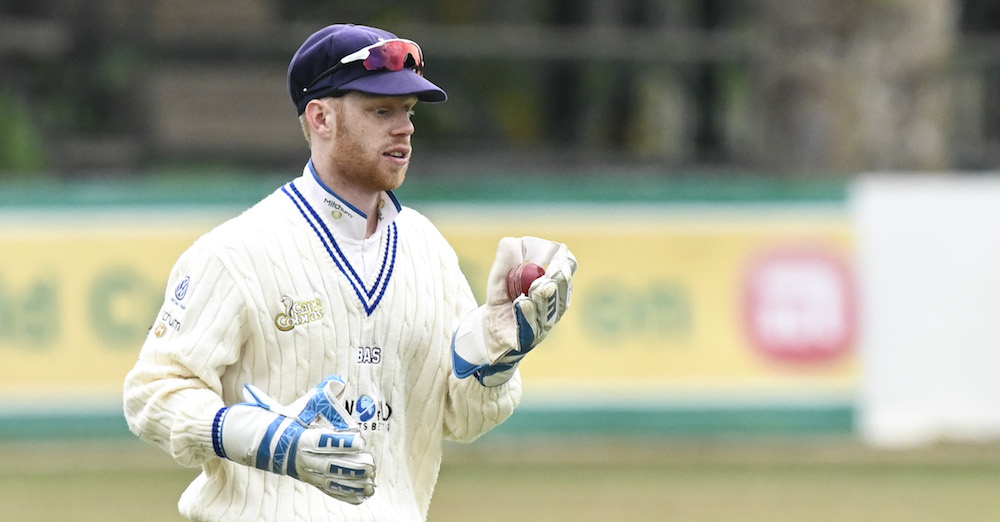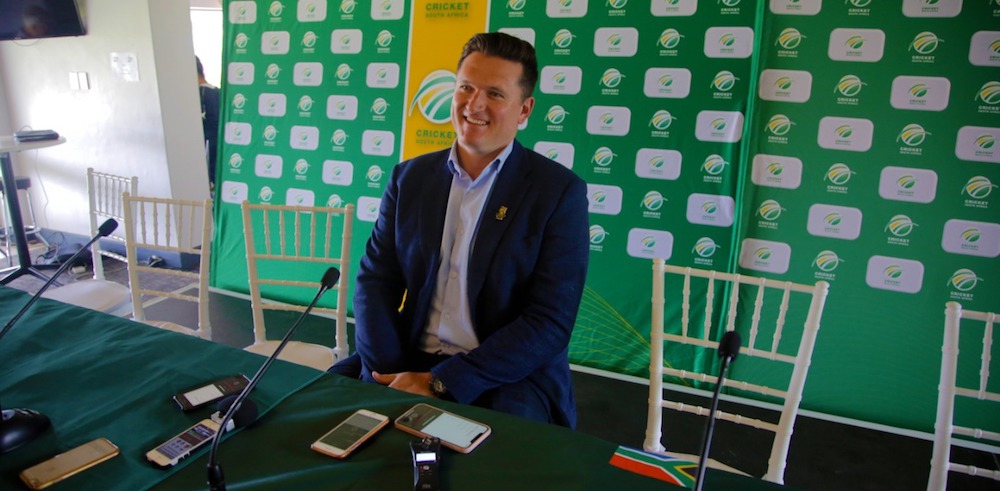What do Shaun Tait, Michael Slater, Michael Yardy, Jonathan Trott, Marcus Trescothick, Nick Compton, Graeme Fowler, Aryaman Birla and Kim Hughes have in common? Chris Chiwanza digs deep and finds lessons that the Proteas can absorb.
We will come to what they share a little later. First, maybe we ought to get this out of the way.
No cricketer walks out onto the pitch unwilling to give their all, unwilling to put in 100% of their ability. That is, of course, unless if they are being paid to put in a subpar performance. Other than that, they put in 100%.
However, the question is, what percentage of ability are they operating at, given the various factors that affect players. For instance, Kagiso Rabada. In January 2019, the Proteas seamer revealed that he was operating at 60% of his abilities. Yet, each time he went out onto the field to bowl, he would give 100% of what he had in his tank, a 100% of that 60%. Of course, that 100% would not be as good as a 100% of a man operating at 100% of his abilities.
Often, when we think and speak of cricketers operating at 100%, we think of it in terms of physical shape. Fitness is something we often limit to the physical, because it is the perceptible. It is what we can see and quantify. In doing that, we overlook an angle that we can’t see.
In September 2019, Australian allrounder, Glenn Maxwell pulled out of a series against Sri Lanka to focus on his mental health. In the wake of Maxwell’s decision, other cricketers took it at as an opportunity to speak about the toll cricket can take on your mind.
In November of the same year, Virat Kohli spoke of how he found himself in a very dark place, battling with “end of the world” thoughts.
“I have gone through a phase in my career where I had felt that it was the end of the world. I just didn’t know what to do and what to say to anyone,” Kohli told reporters in reference to his 2014 slump.
In December 2019 West Indies legend Brian Lara added his voice to the issue by sharing his own struggles between 1995 and 1998 when his career was on a downward spiral. Lara admitted to being mentally drained and feeling despair as he tried to regain form while facing the pressures exerted on him and the rest of the team to do well.
In 2017, New Zealand allrounder Jimmy Neesham was on the verge of leaving the sport for good. He wasn’t performing well, had recurring injuries and had missed out on a spot on the World Cup squad.
Neesham admitted that he “wanted to dominate domestic cricket and wanted to score hundreds every game, and once that starts going in a downward spiral and you’re not going well and you’re not scoring runs, you put more pressure on yourself.”
He also confessed that as things continued southwards, his love for cricket waned.
“Waking up in the morning and opening the shades, hoping it was raining is not the ideal way to start a day of cricket,” he said in an interview in early 2019.
And even though Lara and Kohli did not take breaks, Neesham, Maxwell, Shaun Tait, Michael Slater, Michael Yardy, Jonathan Trott, Marcus Trescothick, Nick Compton, Graeme Fowler, Aryaman Birla and Kim Hughes took time out to get clarity. To put their mental health first.
All these cricketers came to mind as l read of Aiden Markram’s return to cricket from injury. Markram who had arrived on the international scene in a blaze of glory, scoring runs against top teams like Australia, found himself struggling in both red and white ball matches. He seemed not burdened by the weight of great expectations on his shoulders.
Here he was, the prince of cricket in South Africa, expected to ascend to the highest levels, possibly earmarked for captaincy, stringing low scores tour after tour, series after series. But Markram’s woes weren’t in isolation, the entire Proteas batting lineup was struggling.
However, that as it may have been, Aiden Markram is no different from most top tier cricketers, he wants to perform very well because it serves the team. Therefore, when he doesn’t, like any other top performer, he gets worried and chastises himself.
Markram’s frustrations came to a head on a tour to India when he “lashed out at a solid object”, injuring his wrist in the process.
An injury that kept him out of the game for a couple of months. An apologetic Aiden Markram later admitted that “to let the team down is what hurts the most.”
Many called his actions silly and called him names, and simply failed to realise that he had reached a tipping point, and what he needed, more than anything, was help and support to get his head back in the game.
He was not failing to play well out of inability, unwillingness, lack of application or being physically unwell, but because he carried a huge weight on his mind. That is what prevented him to find his way out of the slump he found himself wallowing in.
Many believe that a player in a slump is only one knock away from getting back on their feet again. It is a philosophy that is not so different from the one that says, “if you find yourself in a hole, keep digging, because you might unearth a geyser that will shoot you to the surface.”
Admittedly, there are some who unearth a geyser and are shot to the surface, but many never find it, and simply dig the graves to their international careers.
Also, because of the jostling for spots in the national teams, younger cricketers are often unwilling to take a break away because they fear that they will not earn that spot back. So they toil and toil, under pressure, frustration mounting, hoping for a turn of fortune that will allow them to cement their places in the team. Afraid of the team leaving them behind.
ALSO READ: Is Mental Toughness Coachable?
Theunis de Bruyn who, for the moment, appears as if he has been left behind by the Proteas squad after he struggled to regain form, admitted that “sometimes you force things, and force is not always the way forward.”
But this kind of clarity of thought rarely comes when the player is on the pitch competing with the opposition for a win, and competing with teammates for a berth in the squad. It comes when one is removed from the action, not worried about what is to come tomorrow, a position De Bruyn finds himself in, as he is away from the spotlight, away from the hype, and not where his every move is under scrutiny.
“It’s when you have that peace of mind and you just play the game that you’re good at because it’s something you enjoy… that’s when you find success.”
Aiden Markram’s return to cricket after an extended lay off after he sustained an injury on his return to international cricket in December, seems to have struck the same chord in him.
“I’m happy that I’m back to the old Aiden in the sense that I’m enjoying cricket – playing with a refreshed mindset,” he told reporters after scoring his second 100 in a week on his return to domestic cricket in March 2020.
Certainly, this is not a one-size-fits-all situation. Mental health issues that affect players and performance are just like physical health issues, they come in different forms, and all require different approaches when it comes to treatment, from medicine to time away from the game.
Sometimes soldiering ahead, rolling sleeves and fighting your way back to form might be the answer. However, sometimes not giving up out of a sense of duty, a sense of service, to the team may do more harm than good and handicap a career that could have met and exceeded expectations.
Photo: Christiaan Kotze/BackpagePix











